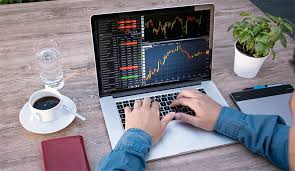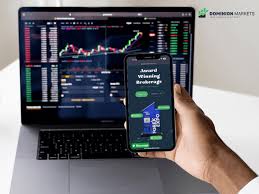The Rise of Automated Forex Trading Advantages and Challenges

In recent years, the financial trading landscape has transformed immensely, with automated forex trading Turkey Brokers becoming increasingly prominent in facilitating access to foreign exchange markets.
Among the most significant advancements in trading technology is automated forex trading. This article delves into this powerful methodology, exploring its advantages, challenges, and the future it holds for traders.
What is Automated Forex Trading?
Automated forex trading, also known as algorithmic trading, involves the use of software and algorithms to execute trades on the foreign exchange market automatically. These algorithms analyze market data, identify signals, and execute trades without the need for manual intervention from the trader. This technology enables traders to capitalize on market opportunities much faster than traditional methods.
The Evolution of Automated Trading
Algorithmic trading has roots in statistical arbitrage and quantitative analysis. Originally, it was used primarily by institutional investors and hedge funds due to its complexity and expense. However, advancements in technology and the proliferation of user-friendly platforms have made automated trading accessible to retail traders as well. Trading software can now be obtained at a fraction of the cost, allowing individual traders to harness similar strategies previously exclusive to financial institutions.
Advantages of Automated Forex Trading
Automated forex trading offers numerous advantages that can significantly enhance trading performance and efficiency.
1. Speed and Efficiency
The primary advantage of automated trading is speed. Algorithms can analyze multiple market conditions and execute trades within milliseconds. This rapid reaction time is crucial in the volatile forex market, where prices can change drastically within seconds.

2. Emotion-Free Trading
Trading can often be a psychological battle, influenced by emotions such as fear and greed. Automated trading eliminates these emotional factors, as decisions are made based on data and predetermined criteria. This objectivity can lead to more disciplined trading practices, minimizing the chances of impulsive decisions.
3. Backtesting Capabilities
One of the critical features of automated trading systems is their ability to backtest trading strategies using historical data. By evaluating a strategy’s performance over past market conditions, traders can refine their algorithms before risking real capital. This feature helps identify profitable strategies and weed out those that are ineffective.
4. Diversification
Automated systems can manage multiple currency pairs and trading strategies simultaneously. This capability allows for diversification across different markets, enhancing the potential for profit while spreading risk. Traders can allocate their resources across several assets, minimizing exposure to any single market movement.
5. Time-Saving
Automated trading eliminates the need for constant monitoring of the markets. Once a trader has set their parameters, the system can operate independently, allowing traders to focus on other interests or commitments. This time-saving element is a significant draw for many individuals looking to trade part-time.
Challenges of Automated Forex Trading
Despite its numerous advantages, automated forex trading is not without its challenges and risks. Understanding these hurdles is crucial for traders considering the transition to algorithm-based strategies.
1. Technology Failures
Automated trading systems rely heavily on technology, and technical malfunctions can lead to significant losses. Issues such as software bugs, internet connectivity problems, or power outages can interfere with trade executions. Consequently, it’s vital for traders to have contingency plans in place to mitigate these risks.

2. Market Conditions
Algorithms are designed based on historical data and prevailing market conditions. However, unforeseen events such as economic crises or geopolitical tensions can lead to market volatility that was not anticipated by the algorithm. In these scenarios, automated systems might fail to react appropriately, potentially resulting in losses.
3. Over-Optimization
Traders may be tempted to over-optimize their algorithms based on past performance, which can lead to a false sense of security. Over-optimization can cause systems to perform well in backtesting but fail miserably in live markets due to curve fitting—where a trading strategy is excessively tailored to historical data while disregarding future market scenarios.
4. Lack of Understanding
Many traders enter the world of automated trading without a proper understanding of the strategies at play. This lack of knowledge can lead to poor decision-making and an inability to fine-tune or troubleshoot automated systems effectively. It’s essential for traders to educate themselves about both the trading methodologies and the underlying technologies involved.
The Future of Automated Forex Trading
Looking ahead, automated forex trading is expected to continue rising. As technology evolves and data processing becomes more sophisticated, the capabilities of trading algorithms will improve. Machine learning and artificial intelligence are already being integrated into trading strategies, allowing systems to learn from new data and adapt their strategies in real-time.
Additionally, the emergence of decentralized finance (DeFi) and blockchain technology may open new avenues for automated trading, leading to innovative trading solutions and platforms. As more traders recognize the benefits of automation, the forex market will likely see a substantial shift toward algorithmic trading practices.
Conclusion
Automated forex trading represents a significant advancement in the world of finance. By leveraging technology, traders can operate more efficiently and effectively in the ever-changing forex market. However, while automation offers numerous advantages, it is essential to be aware of potential challenges and risks. A balanced approach that combines algorithmic trading with a thorough understanding of market dynamics will ultimately lead to the most successful trading outcomes. As we look to the future, it is clear that automated trading will play a crucial role in shaping the next generation of forex trading strategies.
コメントを残す